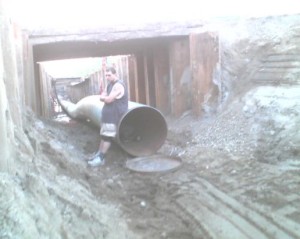Sustainable Building Tech for Environmentally Friendly Houses of the Future
Green technologies and sustainability are buzzwords that are gaining increasing popularity and attention in the public arena. With the world’s population ever rising, and non-renewable energy resources being rapidly depleted, going green is no longer a fad but is increasingly becoming a necessity. This trend is particularly visible in the building industry, with new earth friendly and energy efficient technologies being applied and perfected all the time. By using renewable resources and minimizing our carbon footprint, the following construction technologies are doing their part in saving the planet.
Sustainable Construction Materials
Constructing any building is a large strain on natural resources, and using recycled, repurposed and biodegradable materials can make a large difference. Using repurposed wood, for example, not only gives a home a unique touch, but also curbs deforestation. Natural paints and other biodegradable materials that contain no volatile organic compounds (VOCs) decompose with ease and do not harm the earth. They also eliminate indoor pollution and provide a healthier living environment.
Low Energy Buildings
By relying on renewable energy sources such as wind and solar power, it is possible to make buildings that are virtually off the power grid. According to this home building website, these buildings might initially seem more expensive than conventional ones, but have immense saving potential in the long run. Not only that, but they also help curb carbon emissions and are kind to the environment. There are many ways to cut down on energy consumption, without actually generating your own power. For example, LED lighting uses just a fraction of the energy of traditional incandescent lights.
Water Management
Over fifteen trillion gallons of water a year are used worldwide by buildings, which comes to nearly 14% of the world’s drinkable water. In order to avoid a worldwide water crisis, it is important to utilize economical water supply and reusing systems. This can range from rainwater collection to greywater reuse and on-site sewage treatment. No water is wasted in a green home, with water management systems that reuse the same water multiple times. Water runoff from bathrooms and kitchens can be used to water gardens, and this water can in turn be filtered and used as greywater.
Smart Glass
In conventional buildings, a lot of heat and energy is lost through doors and windows. To combat this problem, low-emittance windows are coated with a special metal oxide that keeps the house cool in summer and warm in winter. Smart glass, also known as electrochromic glass, goes one step further by charging ions in order to control how much light is reflected and absorbed. This allows the glass to actively change its tint depending on the amount of sunlight.
Cool Roofs
Just like smart glass, green roofs are designed to reflect heat and sunlight. By using specially designed reflective tiles, cool roofs combine thermal eminence with high solar reflectance to absorb less heat. Another way is to opt, quite literally, for a green roof by planting gardens on rooftop surfaces. This trend is catching on in many metropolitan areas, and is not only visually pleasing but also helps clean the air and is a great way to reach optimal thermal isolation.




